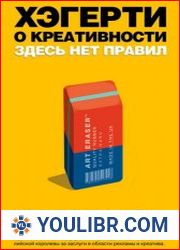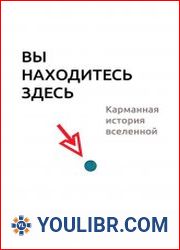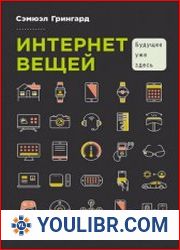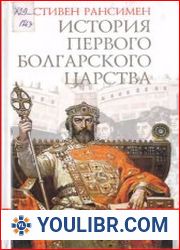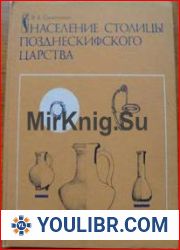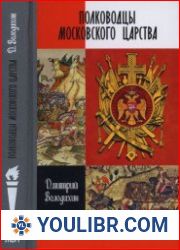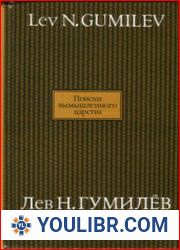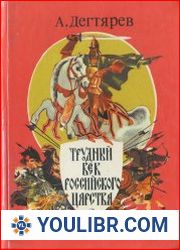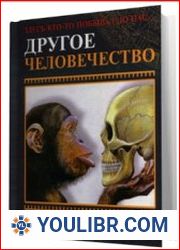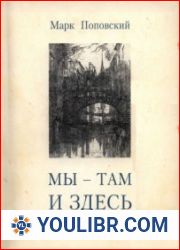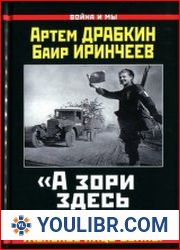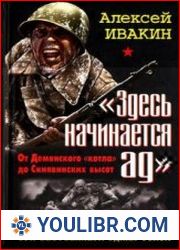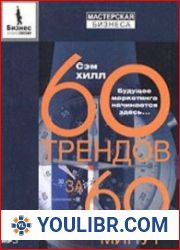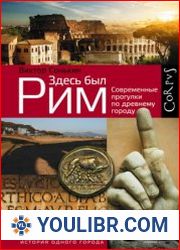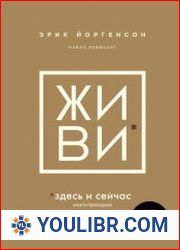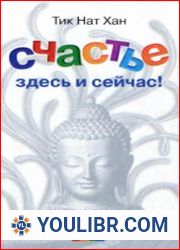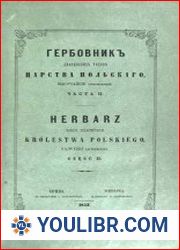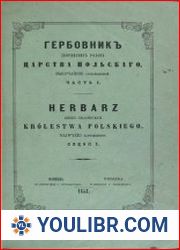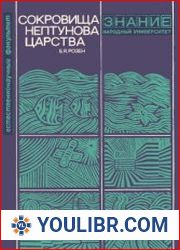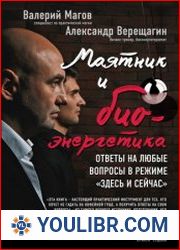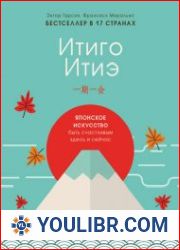
BOOKS - HISTORY - И здесь сошлись все царства... Очерки по истории государева двора в...

И здесь сошлись все царства... Очерки по истории государева двора в России XVI в. повседневная и праздничная культура, семантика этикета и обрядности
Author: Михайлова И.Б.
Year: Размер 19,7 MBМогущественные самодержцы XVI века Василий III, Иван IV Грозный, Борис унов, возглавля
Format: PDF
File size: 19,7 MB
Language: RU
Year: Размер 19,7 MBМогущественные самодержцы XVI века Василий III, Иван IV Грозный, Борис унов, возглавля
Format: PDF
File size: 19,7 MB
Language: RU
Powerful autocrats of the 16th century Vasily III, Ivan IV the Terrible, Boris Godunov, who headed a vast rich country inhabited by millions of subjects, were considered the owners of charismatic power and "God-crowned" masters of the entire "universe." Dressed in full ornate (a large weekend for a fee, barmas and a Monomakh hat), with a precious scepter and power in their hands, they sat on the throne for hours or feasted with foreign ambassadors, solemnly marched from the sovereign chambers to the Kremlin cathedrals and went to country monasteries, from where they regularly went hunting... The unhurried, measured and at the same time densely saturated with "exits" and "exits" the cycle of their life invariably repeated every year. The stable traditions of the sovereign's court determined his etiquette, rituals, the routine of daily activities of the monarch and his family, dignitary boyars and petty officials.
PDFファイルをダウンロード download pdf file 下载 pdf 文件 pdf 파일 다운로드 Scarica il file pdf pobierz plik pdf descargar archivo pdf download pdf file pdf dosyasını indir télécharger le fichier pdf להוריד קובץ PDF تنزيل ملف pdf PDF-Datei herunterladen скачать файл PDF descarregar ficheiro pdf
Os poderosos autocráticos do século XVI, Vassílio III, Ivan IV, Boris Godunov, que lideravam um vasto e rico país habitado por milhões de súbditos, eram considerados os donos do poder carismático e os «deuses» senhores de todo o «universo». Nublados em um ornato completo (um grande fim de semana pago, os bares e o chapéu de Monomaha), com um cetro precioso e uma potência nas mãos, eles sentaram-se durante horas no trono ou beberam com embaixadores estrangeiros, marcharam solenemente dos palcos do estado para as catedral do Kremlin e viajaram para mosteiros de campo, de onde foram regularmente para caçar... A volta de sua vitalidade, dimensionada e, ao mesmo tempo, apertada por «saídas» e «saídas» tem sido sempre repetida todos os anos. As tradições sustentáveis da Corte do Estado definiram a sua etiqueta, o seu rito, a rotina das atividades diárias do monarca e de sua família, os seus exércitos e pequenos funcionários.
Die mächtigen Autokraten des 16. Jahrhunderts Wassili III., Iwan IV. Der Schreckliche, Boris Godunow, der ein riesiges reiches Land mit Millionen von Untertanen führte, galten als Besitzer charismatischer Macht und als „gottgeweihte“ Herrscher des gesamten „Universums“. Gekleidet in ein volles Ornat (ein großes Wochenende gegen Bezahlung, Barmes und eine Monomakh-Mütze), mit einem kostbaren Zepter und einer Macht in der Hand saßen sie stundenlang auf dem Thron oder fieberten mit ausländischen Botschaftern, marschierten feierlich von den souveränen Kammern zu den Kreml-Kathedralen und reisten zu den Landklöstern, von wo aus sie regelmäßig auf die Jagd gingen... Langsam, gemessen und gleichzeitig dicht gesättigt mit „Ausgängen“ und „Ausflügen“ wiederholte sich der Kreislauf ihres Lebens jedes Jahr. Die stabilen Traditionen des souveränen Hofes bestimmten seine Etikette, Riten, die Routine der täglichen Aktivitäten des Monarchen und seiner Familie, die Würdenträger der Bojaren und die kleinen Beamten.
Les puissants autocrates du XVIe siècle Vassili III, Ivan IV Grozny, Boris Godunov, à la tête d'un vaste pays riche peuplé de millions de sujets, étaient considérés comme les détenteurs du pouvoir charismatique et les « maîtres divins » de tout l'univers. Nuagés à plein ornat (grand week-end payant, barmes et chapeau de Monomach), avec un précieux sceptre et une puissance dans les mains, ils se réunissaient pendant des heures sur le trône ou passaient avec des ambassadeurs étrangers, marchaient solennellement des chambres de l'État aux cathédrales du Kremlin et se rendaient dans les monastères de campagne, d'où ils allaient régulièrement chasser... Le cycle de leur vie s'est constamment répété chaque année. Les traditions durables de la cour d'État déterminaient son savoir-vivre, son rite, la routine quotidienne du monarque et de sa famille, des sangliers et des petits fonctionnaires.
Powerful autocrats of the 16th century Vasily III, Ivan IV the Terrible, Boris Godunov, who headed a vast rich country inhabited by millions of subjects, were considered the owners of charismatic power and "God-crowned" masters of the entire "universe." Dressed in full ornate (a large weekend for a fee, barmas and a Monomakh hat), with a precious scepter and power in their hands, they sat on the throne for hours or feasted with foreign ambassadors, solemnly marched from the sovereign chambers to the Kremlin cathedrals and went to country monasteries, from where they regularly went hunting... The unhurried, measured and at the same time densely saturated with "exits" and "exits" the cycle of their life invariably repeated every year. The stable traditions of the sovereign's court determined his etiquette, rituals, the routine of daily activities of the monarch and his family, dignitary boyars and petty officials.
I potenti autocratici del XVI secolo Vasilio III, Ivan IV, Boris Godunov, che guidavano un vasto paese ricco, popolato da milioni di sudditi, erano considerati possessori del potere carismatico e «divini» dell'intero «universo». Coperti di orto pieno (grande uscita a pagamento, bar e cappellino di Monomaha), con preziosi scettro e potenza in mano, seduti per ore sul trono o bevendo con ambasciatori stranieri, sfilando solennemente dalle stanze di stato verso le cattedrali del Cremlino e andando nei monasteri di campagna da dove andavano regolarmente a caccia... Il loro circolo di vitalità, misurato e comunque denso di «uscite» e «uscite» si ripeteva sempre ogni anno. Le tradizioni sostenute del regno del cortile hanno definito la sua etichetta, la sua rito, la routine delle attività quotidiane del monarca e della sua famiglia, i suoi sani e piccoli funzionari.
Los poderosos autócratas del siglo XVI Basilio III, Iván IV el Terrible, Boris Godunov, que dirigían un vasto país rico poblado por millones de súbditos, eran considerados dueños del poder carismático y señores «divinos» de todo el «universo». Nublados en un ornato completo (un gran fin de semana pagado, barmas y gorra de Monomach), con un cetro precioso y un poder en sus manos, se reunían durante horas en el trono o bebían con embajadores extranjeros, marchaban solemnemente de las cámaras soberanas a las catedrales del Kremlin y viajaban a los monasterios campestres, desde donde eran enviados regularmente a cazar... Sin prisa, medido y, al mismo tiempo, densamente saturado de «salidas» y «salidas», el ciclo de sus actividades vitales se repetía invariablemente cada año. Las tradiciones sostenidas de la corte soberana determinaron su etiqueta, rito, rutina de las ocupaciones cotidianas del monarca y su familia, dignatarios boyardos y pequeños funcionarios.
Могущественные самодержцы XVI века Василий III, Иван IV Грозный, Борис Годунов, возглавлявшие обширную богатую страну, населенную миллионами подданных, считались обладателями харизматической власти и боговенчанными повелителями всей вселенной. Облаченные в полный орнат (большое выходное платно, бармы и шапку Мономаха), с драгоценными скипетром и державой в руках они часами восседали на троне или пировали с иностранными послами, торжественно шествовали из государевых палат в кремлевские соборы и ездили в загородные монастыри, откуда регулярно отправлялись на охоту. Неспешный, размеренный и вместе с тем плотно насыщенный выходами и выездами круговорот их жизнедеятельности неизменно повторялся каждый год. Устойчивые традиции государева двора определяли его этикет, обрядность, распорядок повседневных занятий монарха и его семьи, сановных бояр и мелких должностных лиц.
Os poderosos autocráticos do século XVI, Vassílio III, Ivan IV, Boris Godunov, que lideravam um vasto e rico país habitado por milhões de súbditos, eram considerados os donos do poder carismático e os «deuses» senhores de todo o «universo». Nublados em um ornato completo (um grande fim de semana pago, os bares e o chapéu de Monomaha), com um cetro precioso e uma potência nas mãos, eles sentaram-se durante horas no trono ou beberam com embaixadores estrangeiros, marcharam solenemente dos palcos do estado para as catedral do Kremlin e viajaram para mosteiros de campo, de onde foram regularmente para caçar... A volta de sua vitalidade, dimensionada e, ao mesmo tempo, apertada por «saídas» e «saídas» tem sido sempre repetida todos os anos. As tradições sustentáveis da Corte do Estado definiram a sua etiqueta, o seu rito, a rotina das atividades diárias do monarca e de sua família, os seus exércitos e pequenos funcionários.
Die mächtigen Autokraten des 16. Jahrhunderts Wassili III., Iwan IV. Der Schreckliche, Boris Godunow, der ein riesiges reiches Land mit Millionen von Untertanen führte, galten als Besitzer charismatischer Macht und als „gottgeweihte“ Herrscher des gesamten „Universums“. Gekleidet in ein volles Ornat (ein großes Wochenende gegen Bezahlung, Barmes und eine Monomakh-Mütze), mit einem kostbaren Zepter und einer Macht in der Hand saßen sie stundenlang auf dem Thron oder fieberten mit ausländischen Botschaftern, marschierten feierlich von den souveränen Kammern zu den Kreml-Kathedralen und reisten zu den Landklöstern, von wo aus sie regelmäßig auf die Jagd gingen... Langsam, gemessen und gleichzeitig dicht gesättigt mit „Ausgängen“ und „Ausflügen“ wiederholte sich der Kreislauf ihres Lebens jedes Jahr. Die stabilen Traditionen des souveränen Hofes bestimmten seine Etikette, Riten, die Routine der täglichen Aktivitäten des Monarchen und seiner Familie, die Würdenträger der Bojaren und die kleinen Beamten.
Les puissants autocrates du XVIe siècle Vassili III, Ivan IV Grozny, Boris Godunov, à la tête d'un vaste pays riche peuplé de millions de sujets, étaient considérés comme les détenteurs du pouvoir charismatique et les « maîtres divins » de tout l'univers. Nuagés à plein ornat (grand week-end payant, barmes et chapeau de Monomach), avec un précieux sceptre et une puissance dans les mains, ils se réunissaient pendant des heures sur le trône ou passaient avec des ambassadeurs étrangers, marchaient solennellement des chambres de l'État aux cathédrales du Kremlin et se rendaient dans les monastères de campagne, d'où ils allaient régulièrement chasser... Le cycle de leur vie s'est constamment répété chaque année. Les traditions durables de la cour d'État déterminaient son savoir-vivre, son rite, la routine quotidienne du monarque et de sa famille, des sangliers et des petits fonctionnaires.
Powerful autocrats of the 16th century Vasily III, Ivan IV the Terrible, Boris Godunov, who headed a vast rich country inhabited by millions of subjects, were considered the owners of charismatic power and "God-crowned" masters of the entire "universe." Dressed in full ornate (a large weekend for a fee, barmas and a Monomakh hat), with a precious scepter and power in their hands, they sat on the throne for hours or feasted with foreign ambassadors, solemnly marched from the sovereign chambers to the Kremlin cathedrals and went to country monasteries, from where they regularly went hunting... The unhurried, measured and at the same time densely saturated with "exits" and "exits" the cycle of their life invariably repeated every year. The stable traditions of the sovereign's court determined his etiquette, rituals, the routine of daily activities of the monarch and his family, dignitary boyars and petty officials.
I potenti autocratici del XVI secolo Vasilio III, Ivan IV, Boris Godunov, che guidavano un vasto paese ricco, popolato da milioni di sudditi, erano considerati possessori del potere carismatico e «divini» dell'intero «universo». Coperti di orto pieno (grande uscita a pagamento, bar e cappellino di Monomaha), con preziosi scettro e potenza in mano, seduti per ore sul trono o bevendo con ambasciatori stranieri, sfilando solennemente dalle stanze di stato verso le cattedrali del Cremlino e andando nei monasteri di campagna da dove andavano regolarmente a caccia... Il loro circolo di vitalità, misurato e comunque denso di «uscite» e «uscite» si ripeteva sempre ogni anno. Le tradizioni sostenute del regno del cortile hanno definito la sua etichetta, la sua rito, la routine delle attività quotidiane del monarca e della sua famiglia, i suoi sani e piccoli funzionari.
Los poderosos autócratas del siglo XVI Basilio III, Iván IV el Terrible, Boris Godunov, que dirigían un vasto país rico poblado por millones de súbditos, eran considerados dueños del poder carismático y señores «divinos» de todo el «universo». Nublados en un ornato completo (un gran fin de semana pagado, barmas y gorra de Monomach), con un cetro precioso y un poder en sus manos, se reunían durante horas en el trono o bebían con embajadores extranjeros, marchaban solemnemente de las cámaras soberanas a las catedrales del Kremlin y viajaban a los monasterios campestres, desde donde eran enviados regularmente a cazar... Sin prisa, medido y, al mismo tiempo, densamente saturado de «salidas» y «salidas», el ciclo de sus actividades vitales se repetía invariablemente cada año. Las tradiciones sostenidas de la corte soberana determinaron su etiqueta, rito, rutina de las ocupaciones cotidianas del monarca y su familia, dignatarios boyardos y pequeños funcionarios.
Могущественные самодержцы XVI века Василий III, Иван IV Грозный, Борис Годунов, возглавлявшие обширную богатую страну, населенную миллионами подданных, считались обладателями харизматической власти и боговенчанными повелителями всей вселенной. Облаченные в полный орнат (большое выходное платно, бармы и шапку Мономаха), с драгоценными скипетром и державой в руках они часами восседали на троне или пировали с иностранными послами, торжественно шествовали из государевых палат в кремлевские соборы и ездили в загородные монастыри, откуда регулярно отправлялись на охоту. Неспешный, размеренный и вместе с тем плотно насыщенный выходами и выездами круговорот их жизнедеятельности неизменно повторялся каждый год. Устойчивые традиции государева двора определяли его этикет, обрядность, распорядок повседневных занятий монарха и его семьи, сановных бояр и мелких должностных лиц.












